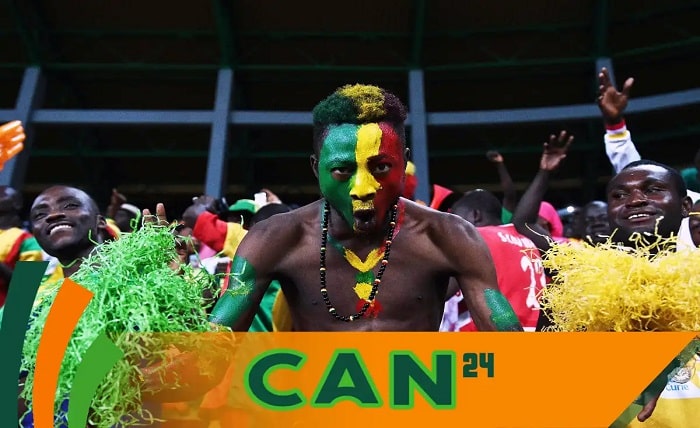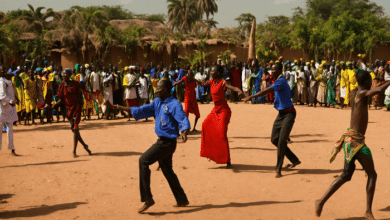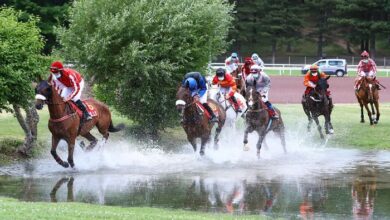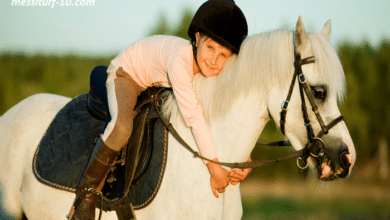
Introduction
The Maxicheval Burkinabé is a unique and significant breed of horse from Burkina Faso. This guide delves into its history, characteristics, care, and its role in the culture and economy of Burkina Faso. Whether you are a horse enthusiast or someone interested in African livestock breeds, this comprehensive guide will provide valuable insights into the Maxicheval Burkinabé.
The Origin of Maxicheval Burkinabé
The Maxicheval Burkinabé has a rich history that dates back centuries. Originating in the West African region, specifically Burkina Faso, these horses have adapted to the local climate and terrain. The breed is known for its endurance and resilience, qualities that have been honed over generations.
Physical Characteristics of Maxicheval Burkinabé
Maxicheval Burkinabé horses are typically medium-sized with strong, muscular bodies. They have a distinct appearance characterized by a short coat, sturdy legs, and a well-proportioned frame. Their physical attributes make them well-suited for the harsh environments of Burkina Faso.
Importance in Burkinabé Culture
In Burkinabé culture, the Maxicheval Burkinabé holds a place of honor. These horses are often used in traditional ceremonies and festivals. They are symbols of prestige and are integral to various cultural practices and celebrations in Burkina Faso.
Breeding Practices of Maxicheval Burkinabé
Breeding Maxicheval Burkinabé requires careful selection to maintain the breed’s desirable traits. Breeders focus on enhancing qualities such as endurance, strength, and adaptability. Traditional breeding practices have been passed down through generations, ensuring the preservation of the breed’s unique characteristics.
Role in Agriculture and Transportation
Maxicheval Burkinabé horses play a crucial role in the agricultural sector of Burkina Faso. They are commonly used for plowing fields and transporting goods. Their strength and stamina make them indispensable for farmers and traders in rural areas.
Diet and Nutrition
Proper nutrition is vital for maintaining the health and performance of Maxicheval Burkinabé horses. Their diet typically includes a mix of grains, hay, and local vegetation. Ensuring a balanced diet helps in sustaining their energy levels and overall well-being.
Health and Veterinary Care
Regular veterinary care is essential for Maxicheval Burkinabé horses. Common health issues include parasitic infections and nutritional deficiencies. Preventive measures such as vaccinations and regular check-ups are crucial for keeping these horses healthy.
Training and Handling
Training Maxicheval Burkinabé horses requires patience and expertise. These horses respond well to consistent and gentle handling. Training typically begins at a young age, focusing on basic commands and gradually introducing more complex tasks.
Economic Impact
The Maxicheval Burkinabé has a significant economic impact in Burkina Faso. They contribute to the livelihoods of many families through agriculture, transportation, and trade. Additionally, they play a role in tourism, attracting visitors interested in traditional Burkinabé culture.
Conservation Efforts
Conserving the Maxicheval Burkinabé is vital for maintaining the breed’s genetic diversity. Various organizations and local communities are involved in efforts to protect and promote the breed. These initiatives ensure that future generations can continue to benefit from this valuable livestock.
Comparative Analysis with Other Breeds
Compared to other horse breeds, the Maxicheval Burkinabé stands out for its adaptability and resilience. While not as fast as some racing breeds, their strength and endurance make them exceptional for work and long-distance travel in challenging environments.
Stories and Legends
The Maxicheval Burkinabé is featured in many local stories and legends. These tales often highlight the horse’s bravery, loyalty, and exceptional abilities. Such stories contribute to the breed’s esteemed status in Burkinabé folklore.
Future Prospects
The future of the Maxicheval Burkinabé looks promising with ongoing conservation and breeding efforts. As awareness of their value grows, there is potential for increased support and investment in their preservation and promotion.
Challenges Faced
Despite their importance, Maxicheval Burkinabé horses face several challenges, including habitat loss and competition from modern machinery. Addressing these challenges requires concerted efforts from both local and international stakeholders.
How to Support Maxicheval Burkinabé Conservation
Supporting the conservation of Maxicheval Burkinabé can be done through various means such as donations to conservation organizations, promoting awareness, and engaging in responsible breeding practices. Every effort counts towards preserving this remarkable breed.
Conclusion
The Maxicheval Burkinabé is more than just a breed of horse; it is a symbol of Burkina Faso’s heritage and resilience. By understanding their history, characteristics, and importance, we can appreciate and support the continued existence of this unique breed. Whether through breeding, conservation efforts, or simply spreading awareness, everyone can play a part in ensuring that the Maxicheval Burkinabé thrives for generations to come.
FAQs
1. What is the Maxicheval Burkinabé?
The Maxicheval Burkinabé is a breed of horse native to Burkina Faso, known for its endurance, strength, and adaptability to the local climate and terrain.
2. Why is the Maxicheval Burkinabé important in Burkinabé culture?
The Maxicheval Burkinabé holds cultural significance in Burkina Faso, often used in traditional ceremonies and festivals as symbols of prestige and cultural heritage.
3. How can I support the conservation of Maxicheval Burkinabé?
You can support the conservation of Maxicheval Burkinabé by donating to conservation organizations, promoting awareness, and engaging in responsible breeding practices.
4. What are the common health issues of Maxicheval Burkinabé?
Common health issues of Maxicheval Burkinabé include parasitic infections and nutritional deficiencies. Regular veterinary care and preventive measures are essential for maintaining their health.
5. How does the Maxicheval Burkinabé contribute to the economy of Burkina Faso?
Maxicheval Burkinabé horses contribute to the economy of Burkina Faso through agriculture, transportation, and trade. They also play a role in tourism by attracting visitors interested in traditional Burkinabé culture.





